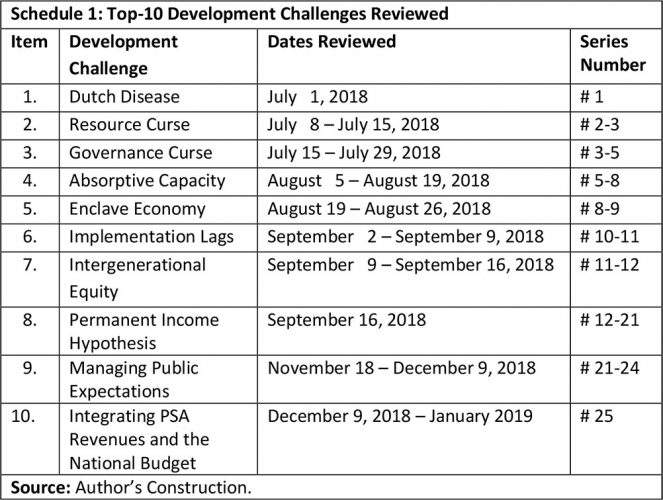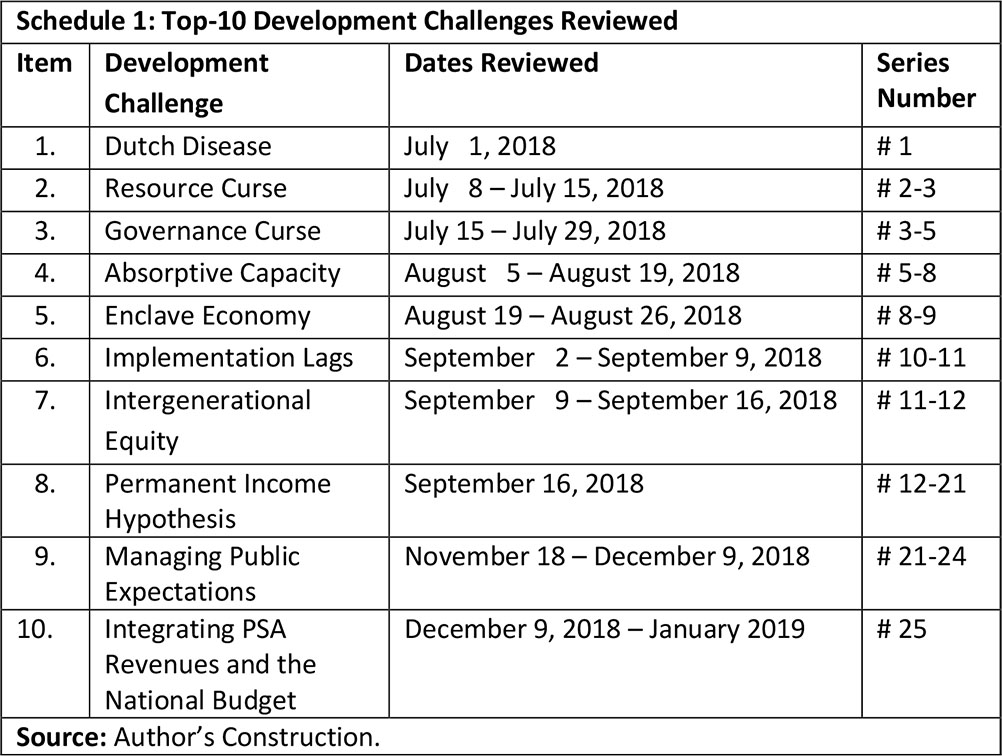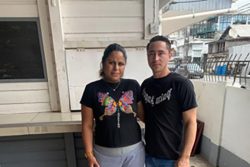This week’s column starts consideration of what I had previously labelled as a non-exhaustive list of the “top-10 economic challenges”, which the Government of Guyana (GoG) has to confront. The emergence of these challenges comes at a point in time when Guyana’s expected petroleum sector remains on schedule for First Oil in 2020! Thirteen discoveries have been made already by ExxonMobil and partners in the Stabroek block. Three of the 13 discoveries were made in the first half of this year, while at least three additional ones are expected during the second half (Tripletail, Uaru and Macu).
Furthermore, other companies are reporting discoveries. Tullow and partners, and Repsol, have recently announced discoveries in the Orinduk block; with Repsol digging wells in the Kanuku block. More convincingly, the first floating production storage and offloading vessel (FPSO) has just arrived in Guyana’s offshore waters. And plans are in train for three FPSOs (with a capacity of 120,000 barrels of oil equivalent (boe) per day), to be in operation by 2022. The expectation remains, however, that Exxon’s exceptional creaming rate, now rated as “the fastest ever ramp-up to First Oil,” may drive outcomes, which, even the best laid plans for the future, would have already missed.
Top-Ten Challenges
What are the “top 10 economic challenges”? I had first identified these challenges more than a year ago in my column of July 1, 2018. I had limited my choice to ten and presented them in random order. Since, I have already discussed each of these in some detail in 25 consecutive columns during the period July 1, 2018 to January, 2019, I shall be brief for the Road Map. These challenges are: 1) the threat of “Dutch Disease”; 2) the burdens of the “Resource Course”; 3) the dangers of the “Governance Curse”; 4) Guyana’s lack of “Absorptive Capacity”; 5) entrenchment in Guyana of an “Enclave-type Economy”; 6) the persistence of “Implementation Lags”; 7) the maintenance of “Intergeneration Equity”; 8) Pressure by International Financial Institutions to spend on the basis of the “Permanent Income Hypothesis”; 9) “Managing Public Expectations”; and, 10) “Integrating PSA Revenues and the National Budget”. I shall briefly comment on each of these challenges.
For the convenience of readers, especially those who might wish to pursue this topic further, both my top ten challenges and the columns in which they appeared are indicated above in Schedule 1.
For the remainder of today’s column, and in those immediately following, I shall indicate the nature and/or scope of each challenge. When completed I shall summarily indicate the types of public spending of Guyana’s petroleum revenues that will be required to surmount these economic challenges.
Challenge 1: Dutch Disease
For purposes of Guyana’s Petroleum Road Map, the Dutch Disease challenge basically refers to the risk that the growth of Guyana’s petroleum sector could reduce the international price competitiveness of its export economy. This could occur if Guyana’s nominal/real exchange rate rises. By this I mean that with expanded oil revenues, less Guyana dollars are required to purchase one unit of any given foreign currency, both nominally and adjusted for price changes. Such a result encourages imports and discourages competing domestic suppliers. The disease is called Dutch, because it was first observed during the 1970s in the Dutch export manufacturing sector, following that country’s discovery of natural gas, two decades earlier.
Indeed, a strong correlation has been observed between the expansion of the Dutch natural gas sector and the decline of several other sectors in its economy (manufacturing, agriculture, and services).
Challenge 2: Resource Curse: Paradox of Plenty
Similar to the Dutch Disease, the Resource Curse is rather colourful language for economics, long known as the dismal science! However, both the Dutch Disease and the Resource Curse derive from observed correlations. In the case of the Resource Curse, the correlation is for developing countries (or small and middle income ones based on global classifications) that are natural resource abundant (especially with petroleum) to experience weaker macroeconomic performance, lesser economic growth (broad-based development), along with greater governance challenges (stunted institutional support systems) when compared to countries with similar characteristics, except for a lack of abundant natural resources!
This observed correlation is, I believe, counter-intuitive. Reasonable persons do not expect that, everything being equal, countries with abundant natural wealth will perform worse than those without! It is for this reason that, some economists alternatively term this phenomenon: the paradox of plenty.
Challenge 3: The Governance Curse
Standard definitions of good governance attribute several essential features to it. These are: it must be participatory, consensus-oriented, responsive, effective, efficient, accountable, transparent, equitable, inclusive and based on the rule of law. For purposes of Guyana’s Petroleum Road Map, governance refers to: “all the processes of governing, including interaction and decision making as Guyana’s oil and gas sector emerges. This therefore, is clearly not limited to Government, but instead refers to the multitude of laws, regulations, rules, norms, actions, including market behaviour in Guyana. My discussion of this topic in the earlier referenced columns had focused on four threats that this challenge poses, namely 1) regime entrenchment 2) undermining of the rule of law and corruption 3) bad governance under the impact of rising and volatile oil revenues/incomes; and, 4) the adverse impact of non-market incentives on the spread of ‘rent-seeking” behaviours in Guyana.
Conclusion
Next week I treat with four more of the remaining “top-ten” economic challenges in the order given. In the subsequent week I treat with the remaining three. Additionally, that column will wrap-up this topic, indicating the types of Government spending these challenges warrant.









